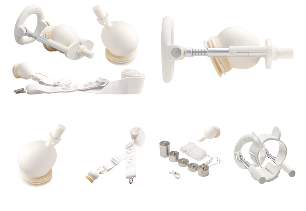
Doctors have been dealing with the problem of increasing male dignity for over a hundred years, and no universal, completely safe and effective method has yet been invented. There are many products - from creams and sprays to pumps and surgeries - that most often do not work or have little effect. In addition, some of them have serious side effects, including erectile dysfunction.
Which penis is considered small?
The average size of a man's dignity is 12, 5 × 15 cm in length during an erection with a circumference of 10 to 12 cm. At the same time, in a resting state, different men's sizes can differ significantly.
In rare cases, genetic or hormonal problems can cause a disease called micropenia. Peyronie's disease (curvature) and prostate cancer surgery can also reduce penis size.
At the same time, studies show that most men who want to have surgery to increase their masculinity have a medium-sized penis with no deviations from the norm. The main reasons why they are not satisfied with their size are:
- It seems to them that the length or thickness of the penis is less than that of most other men;
- it can be difficult to estimate the size of your own genitals, especially if you do it standing up and down (being overweight and having a big belly can distort perception);
- For some men, discontent is associated with a mental disorder that, according to one study, affects most patients undergoing enhancement surgery. They are also the least satisfied with the results of the treatment.
How to increase male dignity without surgery?
- Weight loss. There is a safe and effective method of enlarging your penis - removing extra pounds. Urologists note that many men who think they have a small penis are overweight. Weight loss releases the part of the penis that is usually hidden by the abdomen. This does not actually increase the size, but the organ will look longer.
- Vacuum pump. The penis is placed in a special cylinder from which air is sucked. The vacuum creates blood flow to the penis, making it slightly larger. The organ is then compressed into a tight tourniquet ring to prevent blood from returning. The main disadvantage of this method: the effect lasts until the man removes the ring from the base of the penis. In addition, using the pump for more than 20-30 minutes can cause tissue damage. This method is also sometimes used to treat erectile dysfunction, but there is no evidence of its effectiveness.
- Exercises. Most exercises cannot increase masculinity. However, a weight suspended on the penis (when at rest) can stretch the organ a little. "You may have to carry a weight tied to your penis for eight hours a day for six months, " say experts. After all, a man will be very lucky if his penis size increases by up to 1 cm. Risks include ruptured tissues and blood vessels.
- Pills, supplements, ointments, sprays and creams. Supplements and topical agents generally do not work. "It is safe to say that all of this is completely absurd, " say the doctors.
- Extenders and stretchers. With the help of an extender or stretcher, you can enlarge your penis without resorting to surgery, surgeons say. But for that, you will need to use an extension cord for about a year. On average, this method increases the length of the organ by 4 cm.
For those who prefer a surgical method to a diet, liposuction will help you quickly get rid of the fat around the penis. However, the effect of this will not last long if the man does not change his eating habits and start controlling his body weight.
Male dignity enhancement surgery: Price

The cost of penile stretching in clinics depends on the type of surgery. The final value is also influenced by the cost of additional materials (for example, prosthesis, extensor), the reputation of the clinic and the experience of the doctor.
Surgical methods of elongating the penis and increasing its circumference (circumference) have been widely performed since 1991. However, there is still not enough research done to accurately predict the results and potential risks of an intervention. For example, a study by the London Institute of Urology showed that only 35% of patients who underwent surgery to improve their manhood are satisfied with the results. Half of those who performed the procedure again resort to the services of a surgeon.
An indication for surgery can be considered a penis smaller than 10 cm in an erect state.
How penis enlargement surgery is done
There are two main surgeries to enlarge the penis.
- Penile lengthening. The name of the operation to increase male dignity is ligamentotomy. The most common method involves cutting the ligament that connects the penis to the pelvic bone. This allows the man's penis to be slightly enlarged - on average, no more than 3-5 cm. In reality, this operation does not lengthen the penis, but it does release that part of the organ that is usually hidden. In order to prevent the ligament from growing in the same place for a certain time, it will normally be recommended to the man to use an extensor (it is best to use a stretcher immediately after surgery and connect the extensor after 3-5 months).
- Penis thickening (expansion). For men who believe their penis is very thin and small in diameter, surgery to thicken the organ is recommended. The circumference can be increased with the help of the patient's own implanted fat or tissues taken from another part of the patient's body, as well as silicone implants or the introduction of biogel. All procedures must be performed by a qualified professional at a medical facility. It is strictly forbidden to inject drugs under the skin, including petroleum jelly, etc. , at home, on your own. These experiences can cause deformation of the penis, suppuration, oleogranuloma and inability to have sex.
Surgical risks
Before applying for a loan for an operation to increase masculinity, doctors advise you to think about the possible risks. The most common side effects of stretching are:
- onset of infection,
- nerve damage,
- desensitization,
- difficulty getting an erection,
- scars.
An increase in the thickness of the penis can lead to irregularities on the surface of the organ, changes in its shape, rejection of inserted and transplanted materials and tissues and, sometimes, even death.














































